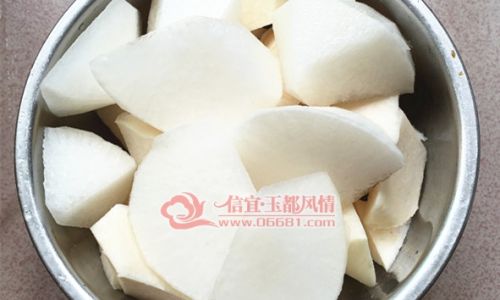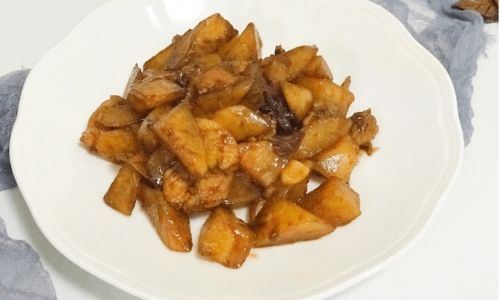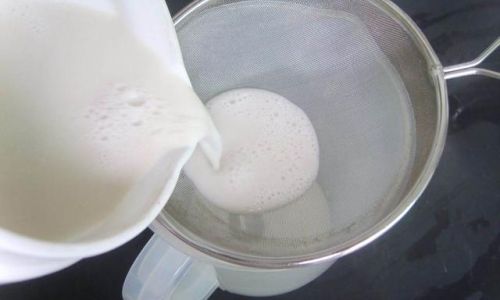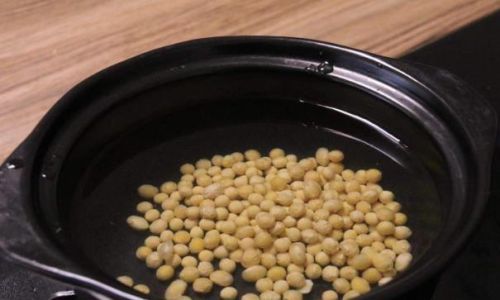Daikon radish, a crisp and mildly peppery root vegetable, is a culinary chameleon that thrives in global cuisines. Often overlooked in Western kitchens, this versatile ingredient—known for its refreshing crunch and adaptability—deserves a spotlight in home cooking. Whether you’re a seasoned chef or a novice cook, learning how to prepare daikon radish opens doors to nutritious meals bursting with flavor. This article explores five innovative cooking methods, from stir-fries to pickles, ensuring you never tire of this humble root.
Understanding Daikon Radish
Before diving into recipes, it’s essential to appreciate daikon’s unique qualities. Native to East Asia, daikon (Raphanus sativus var. longipinnatus) is a winter staple in Japanese, Korean, and Chinese dishes. Its cylindrical shape, snow-white flesh, and green leafy tops make it easily identifiable. Nutritionally, daikon is a powerhouse: low in calories, high in fiber, and rich in vitamin C, folate, and antioxidants. Its mild flavor profile—slightly sweet with a peppery kick—makes it a perfect canvas for bold seasonings.
Selecting and Storing Daikon
The journey to a great dish begins at the grocery store. Choose daikons that feel firm, heavy for their size, and free of soft spots or blemishes. The greens, if attached, should be vibrant and unwilted. Store unwashed daikon in a plastic bag in the refrigerator’s crisper drawer for up to two weeks. If the greens are fresh, wrap them separately to extend their shelf life.

Stir-Fried Daikon: Quick and Crispy
Stir-frying is the fastest way to transform daikon into a tender yet crisp side dish. This method preserves the vegetable’s natural moisture while caramelizing its edges.
Ingredients:
- 1 medium daikon radish (about 1.5 lbs), peeled and julienned
- 2 tbsp vegetable oil
- 3 garlic cloves, minced
- 1 tbsp fresh ginger, grated
- 2 tbsp soy sauce (or tamari for gluten-free)
- 1 tbsp rice vinegar
- 1 tsp sesame oil
- 1 red chili, thinly sliced (optional)
- 2 green onions, chopped
Instructions:
- Prep the Daikon: Julienne the daikon into matchsticks or thin slices. Smaller pieces cook faster and evenly.
- Sauté Aromatics: Heat oil in a wok over medium-high heat. Add garlic and ginger, stirring until fragrant (30 seconds).
- Cook the Daikon: Toss in the daikon and stir-fry for 3–4 minutes until slightly softened. Avoid overcooking to retain crunch.
- Season: Drizzle soy sauce, rice vinegar, and sesame oil. Toss to coat.
- Finish: Add chili and green onions. Serve immediately with steamed rice or noodles.
Pro Tip: For added depth, toss in mushrooms, bell peppers, or thinly sliced beef during step 3.
Simmered Daikon: Melt-in-Your-Mouth Tenderness
Simmering daikon in broth or dashi (Japanese stock) transforms it into a buttery-soft delight. This method is ideal for miso soup, stews, or as a standalone dish.
Ingredients:
- 1 large daikon, peeled and cut into 1-inch thick rounds
- 4 cups dashi (or vegetable/chicken broth)
- 2 tbsp mirin (sweet rice wine)
- 1 tbsp soy sauce
- 1 tbsp sugar
- 1 tbsp sesame seeds (for garnish)
- 2 tbsp chopped cilantro (optional)
Instructions:
- Prep the Daikon: Cut rounds into half-moons for faster cooking.
- Simmer: In a pot, combine dashi, mirin, soy sauce, and sugar. Bring to a boil, then reduce heat. Add daikon and simmer uncovered for 20–25 minutes until tender.
- Glaze: Increase heat to medium-high and cook until liquid reduces to a syrupy glaze (5–7 minutes).
- Serve: Garnish with sesame seeds and cilantro. Pair with rice or as a side to grilled meats.
Variation: For a Korean twist, use anchovy broth and add gochujang (chili paste) during simmering.

Roasted Daikon: Caramelized Goodness
Roasting daikon concentrates its natural sugars, creating a caramelized exterior and creamy interior. This technique works wonders as a side dish or in salads.
Ingredients:
- 2 lbs daikon, peeled and cut into wedges
- 3 tbsp olive oil
- 1 tsp smoked paprika
- 1 tsp garlic powder
- Salt and pepper to taste
- 1 tbsp honey (or maple syrup for vegan)
- 1 lemon, quartered
Instructions:
- Prep: Preheat oven to 400°F (200°C). Toss daikon wedges with oil, paprika, garlic powder, salt, and pepper.
- Roast: Spread on a baking sheet and roast for 30 minutes. Flip, drizzle with honey, and roast another 15–20 minutes until golden.
- Finish: Squeeze lemon juice over the top. Serve warm or at room temperature.
Pro Tip: Add chunks of carrots or parsnips for a colorful medley.
Pickled Daikon: Tangy and Refreshing
Pickling daikon is a preservation method that yields crunchy, vibrant condiments. Use them in banh mi sandwiches, tacos, or as a palate cleanser.
Ingredients:
- 1 lb daikon, peeled and julienned
- 1 cup rice vinegar
- 1/2 cup sugar
- 1 tbsp salt
- 1 tsp red pepper flakes
- 4 garlic cloves, smashed
Instructions:
- Prep: Toss daikon with salt in a bowl. Let sit 30 minutes to release moisture. Rinse and pat dry.
- Brine: In a saucepan, combine vinegar, sugar, and pepper flakes. Simmer until sugar dissolves. Remove from heat.
- Pickle: Pack daikon into sterilized jars. Add garlic cloves. Pour hot brine over, ensuring daikon is submerged.
- Store: Seal jars and refrigerate for at least 24 hours before serving. Pickles last up to a month.
Variation: For a Korean mu style, omit sugar and use a 1:1 ratio of vinegar to water with a fish sauce kick.

Daikon in Soups and Stews: Hearty Comfort
Daikon’s high water content makes it a stellar addition to broths and stews, where it absorbs flavors while adding substance.
Ingredients (for a Clear Soup):
- 6 cups chicken or vegetable broth
- 1 lb daikon, peeled and cubed
- 1 carrot, sliced
- 4 shiitake mushrooms, sliced
- 2 tbsp miso paste
- 1 tbsp toasted sesame oil
- 4 green onions, chopped
Instructions:
- Simmer Broth: In a pot, bring broth to a boil. Add daikon and carrots. Reduce heat and simmer 15 minutes.
- Add Mushrooms: Stir in mushrooms and cook 5 minutes.
- Finish: Whisk miso with a ladle of hot broth to dissolve, then stir into the pot. Drizzle sesame oil.
- Serve: Ladle into bowls and top with green onions.
Pro Tip: For a heartier stew, add cubed pork belly or tofu during simmering.
Common Mistakes to Avoid
- Overcooking: Daikon turns mushy if boiled too long. Stick to simmering times.
- Under-Seasoning: Its mild flavor needs ample salt, spices, or acids to shine.
- Ignoring the Greens: Daikon leaves are edible! Sauté them with garlic for a nutrient-packed side.
Creative Twists and Pairings
- Daikon Fries: Toss wedges in cornstarch, fry until crisp, and sprinkle with furikake (Japanese seasoning).
- Daikon Sushi Rolls: Shred raw daikon and mix with cream cheese for vegetarian rolls.
- Daikon Smoothie: Blend with pineapple, ginger, and coconut water for a detoxifying drink.
Conclusion
Daikon radish is a culinary marvel waiting to be explored. From quick stir-fries to patiently simmered stews, its adaptability rewards cooks with endless possibilities. Experiment with global flavors, and don’t shy away from unconventional pairings—after all, the best dishes emerge from curiosity. So grab a daikon, sharpen your knife, and let this root vegetable redefine your kitchen repertoire.
Final Tip: Always taste as you cook! Adjust seasonings to balance daikon’s subtle sweetness and peppery undertones. Your taste buds will thank you.






0 comments